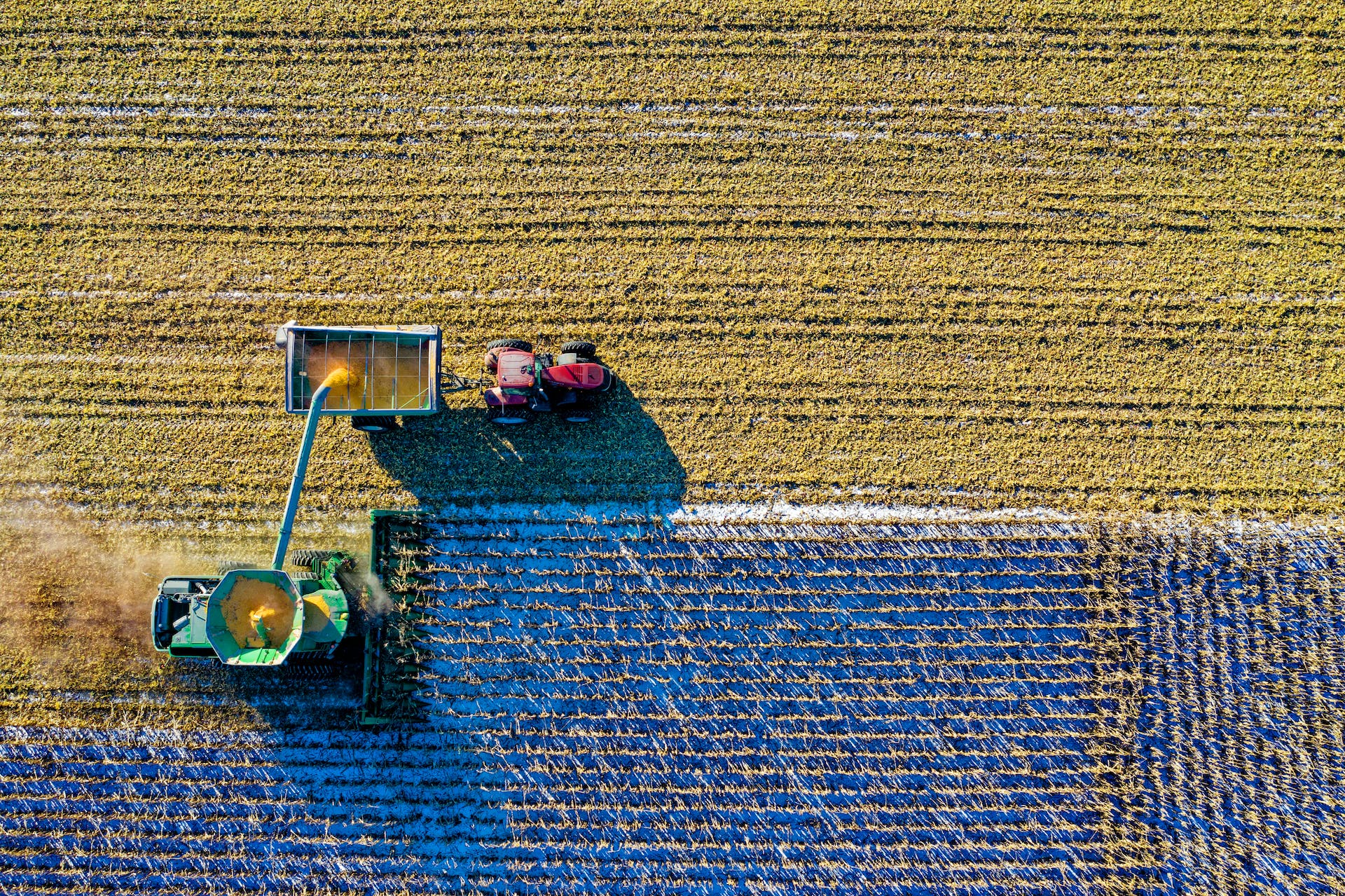How can AI and IoT enhance the efficiency and sustainability of smart farms?

Smart farming is much more than a catchy buzzword. It represents a profound shift in agricultural practices, merging traditional know-how with cutting-edge technology. The potential of Artificial Intelligence (AI) and Internet of Things (IoT) in this realm is truly remarkable. These technologies, grounded in the analysis of real-time data, can streamline farming operations, optimize resource management, and ultimately, make agriculture sustainable and efficient.
The Role of IoT in Data-Based Agriculture
The Internet of Things (IoT) is a network of interconnected devices that communicate with each other, exchanging data and information. The application of IoT in agriculture leads to a new era of data-based farming, where every step of the agricultural process can be monitored, controlled, and optimized based on real-time data.
Sujet a lire : How can technology assist in the restoration of ecosystems and biodiversity?
In the field, IoT devices, such as sensors, are used to collect a vast array of data. These sensors can be installed in the soil, on farming equipment or even on the crops themselves. Soil sensors, for instance, can provide real-time data on the soil’s temperature, moisture, and nutrient content. This ensures that farmers are always aware of the soil’s state and can adjust their farming practices accordingly. Similarly, sensors on farming equipment can monitor how the machinery is operating, while crop sensors can track the health and growth of the crops.
The constant stream of data from these sensors provides farmers with a comprehensive understanding of their farm’s conditions. This data can inform decisions on when to irrigate, when to harvest, or when to apply fertilizers, leading to improved crop yields and resource management.
Dans le meme genre : How Are Augmented Reality Apps Transforming Home Renovation Planning?
Precision Agriculture Through AI
The explosion of data from IoT devices presents its own challenge: how to analyze and make sense of this massive amount of information? This is where Artificial Intelligence (AI) comes into play. AI, through algorithms and machine learning, can process and analyze large volumes of data, turning it into actionable insights. This leads to precision agriculture—the ability to make precise decisions about farming practices based on real-time data.
For instance, AI can analyze the data from soil sensors to predict when a certain plot of land will require watering. This saves farmers time, as they no longer need to manually check the soil’s moisture levels. Additionally, by accurately predicting watering needs, farmers can prevent overwatering and thus conserve water.
AI can also help in monitoring crop health. Using AI algorithms, farmers can quickly identify any signs of disease or pests in their crops. This early detection allows for timely intervention, saving crops from potential damage and ensuring healthy yields.
IoT and AI in Smart Water Management
Water is a critical resource for agriculture, and efficient water management is crucial for sustainable farming. Both IoT and AI hold great promise for revolutionizing water management in agriculture.
IoT devices like soil moisture sensors and weather stations can collect real-time data on the farm’s water needs and the availability of natural water. This data can then be analyzed by AI to determine the optimal water usage for the farm. AI can also predict future water needs based on historical data and weather predictions, allowing farmers to plan their watering schedule in advance.
Smart irrigation systems, which are essentially IoT-based, can also be integrated with AI. These systems can monitor and control the irrigation process, ensuring that each crop receives the right amount of water at the right time. This not only conserves water but also improves crop yields.
The Future of Smart Farming with AI and IoT
The integration of AI and IoT in agriculture heralds a new era of smart farming. Through data-based decision making and precision agriculture, farmers can optimize their farming practices and resource management, achieving greater efficiency and sustainability.
But the potential of AI and IoT in agriculture goes beyond enhancing efficiency and sustainability. These technologies can also help farmers adapt to changing climatic conditions, predict and manage crop diseases, and even automate farming processes.
For instance, AI and IoT can be used to build predictive models for climate change impacts on agriculture. These models can help farmers prepare for and adapt to changes in temperature, rainfall patterns, and occurrence of pests and diseases.
Furthermore, AI and IoT can also enable farm automation. With self-driving tractors and drones for crop monitoring, the future farm might well be a place where most of the work is done by machines, guided by AI and informed by real-time data from IoT devices.
In conclusion, the synergy of AI and IoT presents a transformative opportunity for agriculture. By harnessing these technologies, farmers can usher in a new era of smart, sustainable, and efficient farming. However, it is important to note that the adoption of AI and IoT in agriculture is not without challenges. Issues such as data privacy, cybersecurity, and the digital divide among farmers need to be addressed to fully realize the potential of these technologies. Nonetheless, with continuous advancements in technology and appropriate policy interventions, the future of farming looks smart and promising.
AI and IoT in Livestock Farming
Livestock farming has made significant strides with the introduction of AI and IoT technologies. As in crop farming, these technologies can collect, analyze and leverage data to improve farming practices and enhance efficiency.
IoT in livestock farming is mainly centered around the use of sensors and devices to monitor and track the health of the animals. For instance, wearable devices, much like a Fitbit for cows, can track an animal’s movement, temperature, and feeding habits. Similarly, sensors installed in the farm can monitor environmental factors such as humidity and temperature to ensure optimal living conditions for the livestock.
The data from these devices can then be processed by AI algorithms to provide actionable insights. For example, by analyzing an animal’s movement and feeding data, AI can detect early signs of illness, allowing for timely intervention. AI can also analyze environmental data to determine the optimal conditions for raising specific types of livestock, leading to improved animal health and productivity.
Moreover, AI and IoT can streamline livestock management. For instance, Radio Frequency Identification (RFID) tags, an IoT solution, can be used to automate animal identification and tracking. This helps farmers in managing their livestock inventory, preventing losses, and optimizing breeding practices.
The Role of AI and IoT in Agricultural Forecasting and Planning
Predictive analytics is another area where AI and IoT are making a significant impact on agriculture. By leveraging historical and real-time data, predictive models can forecast future outcomes and trends, aiding farmers in planning and decision-making.
For instance, AI can analyze historical weather data and forecasts to predict future climatic conditions. This can help farmers plan their sowing, irrigation, and harvesting schedules more accurately, leading to better yields. Similarly, predictive models can forecast pest and disease outbreaks, allowing farmers to take preventive measures in advance.
IoT also plays a vital role in predictive analytics by providing the necessary real-time data. For instance, weather stations and soil sensors can provide data on current weather conditions and soil health, which can be used in combination with historical data to forecast future conditions.
Conclusion
AI and IoT are reshaping the way we farm, bringing about the era of smart farming. By integrating these technologies, farmers can make data-driven decisions, optimize resources, and enhance their efficiency and sustainability. Furthermore, AI and IoT can help farmers adapt to changing climatic conditions and predict disease outbreaks, ultimately securing the future of agriculture.
However, the journey to fully integrated smart farming is not without challenges. Issues concerning data privacy, cybersecurity, and the digital divide among farmers need to be addressed. Farmers’ skills also need to be upgraded to effectively use these technologies.
Nonetheless, with the continuous advancements in AI and IoT technologies and concerted efforts from stakeholders, the future of farming appears to be smart, sustainable, and efficient. As we continue to explore the potential of these technologies, it is clear that the future of agriculture lies in harnessing the power of AI and IoT.
